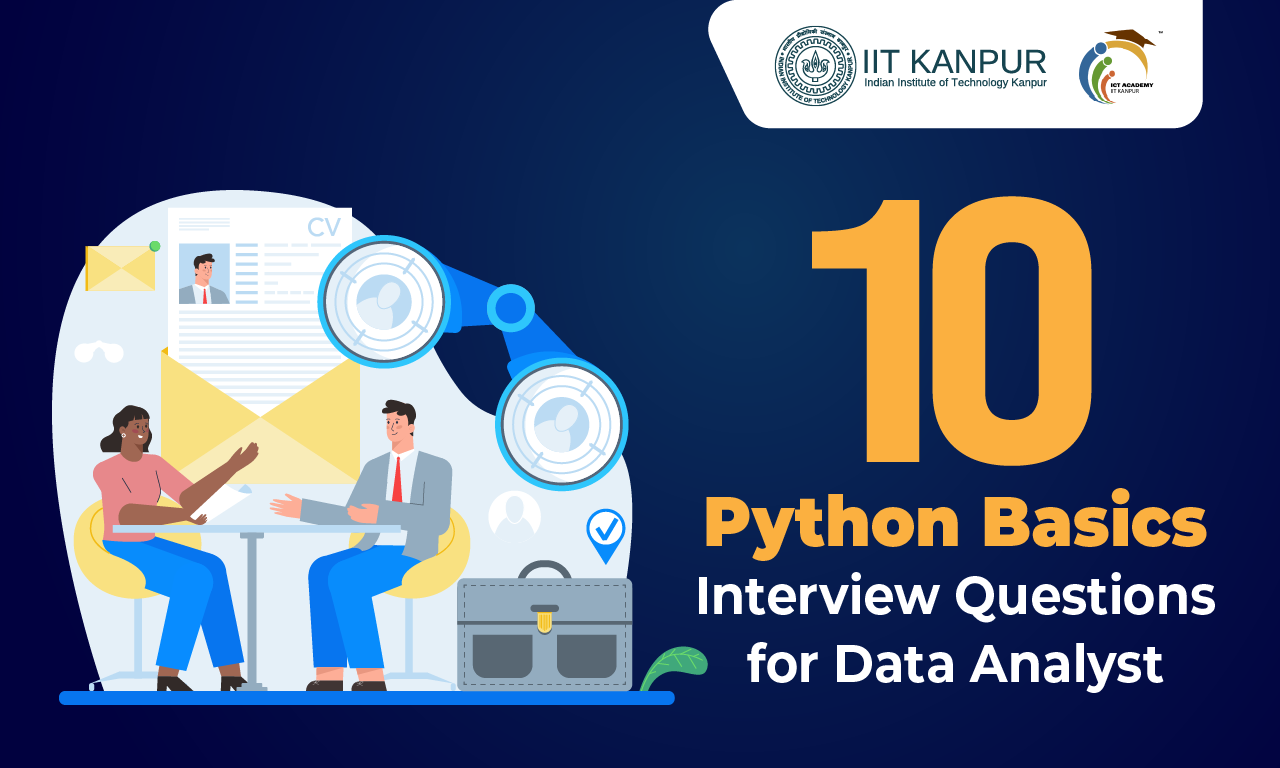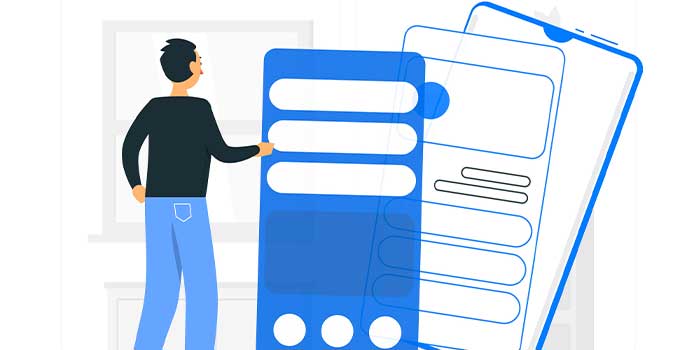10 Python Basics Interview Questions for Data Analyst

Python Interview Questions for Data Analyst: The best career decision you may ever make is to become a skilled data analyst. Besides offering interesting job positions, the field of data analytics opens several flexible career options for you.
Roles in data analysis have been on the high-demand side at the global level. With more business and organizations shifting focus toward data-driven decisions, their respective needs for skilled data analysts increase at the same time. So it’s time to consider a rewarding career as a data analyst and be prepared for the best interview with some easy and main topics, such as Python basics interview questions for data analytics.
With high paychecks, scope for career progression, a good reputation, and flexibility to look for jobs across varied industries, a career in data analysis has much to offer. However, you cannot start your career with this just by mastering the basic concepts of Python. You must be very well-prepared with advanced-level concepts frequently asked in the interview. You can either pursue the best data analytics course or stay glued to discover the commonly asked Python interview questions.
Also Read: 20 Python Interview Questions for Data Science Job
Prepping Up for the Best Data Analyst Interview
There is always a long queue for data analyst jobs, and witnessing the high competition, it is best to appear for an interview only after you are fully prepared. Getting a grip on some Python basics interview questions for data analytics before appearing for the interview can be very beneficial.
You can further boost your confidence by upgrading your skills and knowledge concerning Python and pursuing the best Python basic course from a trusted online learning platform that allows you to acquire all the necessary skills in conducting data analysis using Python.
Top 10 Questions to Help You Succeed in a Data Analyst Interview
First-time interviews can be scary, especially when you have no previous professional experience. But preparing beforehand will give you all the confidence to bring back to the table and do far better than other competitors. The questions asked in a data analyst interview can be about anything, starting from Python basics to advanced concepts like list comprehension.
Therefore, acquiring a comprehensive knowledge of Python basics interview questions for data analyst is the best choice you have. Here are ten important questions that can make your interview remarkable and successful.
1. Why is Python the most popular tool for data analysis?
The language of Python has significant versatility, scalability, and flexibility; hence, it’s very popular among data analysts. Its rich libraries and ecosystems make it a more than sufficient fit for needs related to data analysis. Simple syntax with ease of learning/understanding makes the language very appealing to data analysts. Its built-in mathematical functions and libraries enable analysts to analyze large data sets and calculate mathematical problems quickly.
2. Name a few built-in functions in Python.
Python has several built-in functions to name, like:
- float()- that converts a number or a string to a floating-point number.
- str(): Converts an object to a string.
- int(): Converts a string or number to an integer
- len(): Returns the size (the number of items) of an object.
- print(): Sends the objects to the console.
- dict(): Creates a dictionary out of key-value pairs.
- range(): This is an itertools function that returns a sequence of numbers.
- tuple(): This converts an iterable object into a tuple.
3. What is Pandas in Python, and how does it help in data analysis?
Pandas is a functional Python language library mainly used in data cleaning and handling, data wrangling, and manipulation in general. The open-source library contains a DataFrame object designed for creating structures for data operations, handling missing data, or merging datasets, and is also useful for time series analysis.
Pandas can also integrate with other libraries and support various file formats, making it essential for efficient data processing in Python.
4. How can you install external libraries in Python?
You can easily install external libraries in Python using the package installer pip. By writing “pip install library_name” and replacing the “library_name” with the name of the library you wish to include in a command prompt, you can install an external library.
5. How do you read a CSV file in Python using Pandas?
For reading from a CSV file in Python using Pandas, you must import the Pandas library with the line: “import pandas as pd.” After this, you must use the function “pd.read_csv() using the file path as an argument. You can customize your reading files by changing the header, column names, or delimiter.
6. Name the common file types used in Python for data analysis.
Some of the common file types typically used in data analysis are SQL, CSV, Excel, HDF5, JSON, and Parquet. Besides these, other libraries like Pandas and NumPy also support all of these types of files.
7. How can you handle errors and exceptions in Python?
Exceptions and errors are common in Python and are handled with try-except blocks. You can place a code that might raise an exception inside a “try” block. If an exception occurs, the control moves to the corresponding “except” block, where you can handle the error or print a message. You can also use “else” if no exceptions occur and “finally” for further cleanup actions.
8. What do you think NumPy is, and how does it make data analysis easier?
NumPy, one of the richest libraries for Python with respect to numerical computing, comprises features such as multidimensional arrays (ndarray), mathematical functions and linear algebra operations. In the process of data analysis, analysts use NumPy to store and manipulate their numerical data in a way that becomes efficient for further transformations and computations.
9. How do you calculate a mean in Python?
You can calculate the mean or average of a list or a NumPy array data in Python by using the “numpy.mean(data)” or “statistics.mean(data)” from the module of lists of numbers.
10. Can you explain list comprehension in Python?
An important concept and one of the commonly asked Python basics interview questions for data analytics; list comprehension offers a compact way to build lists in Python. It allows you to create a new list from an expression and any iterable. In other words, it is an expression paired with a “for” clause in square brackets.
Occasionally, it may have “if” clauses for filtering. For instance, [x*2 for x in range(1, 5)] generates [2, 4, 6, 8] by iterating over the numbers 1 through 4 and doubling each. The code generated is efficient and readable, and combines loops into one line.
| Related Data Analytics Articles | |
|---|---|
| Data Analytics vs Digital Marketing | Excel for Predictive Analysis |
| Important Excel Functions for Data Analysis | Application of Data Analytics in 2024 |
Final Thoughts
A prior understanding of the basic Python and data analytics concepts, formulas, and expressions can make you feel more confident for your interview. The preparations would also increase your chances of standing out as a knowledgeable candidate amongst the crowd of applicants and securing your desired data analyst position.
Contact us today if you’re interested in learning more about data analysis or Python, or are seeking useful professional certifications for your resume.



